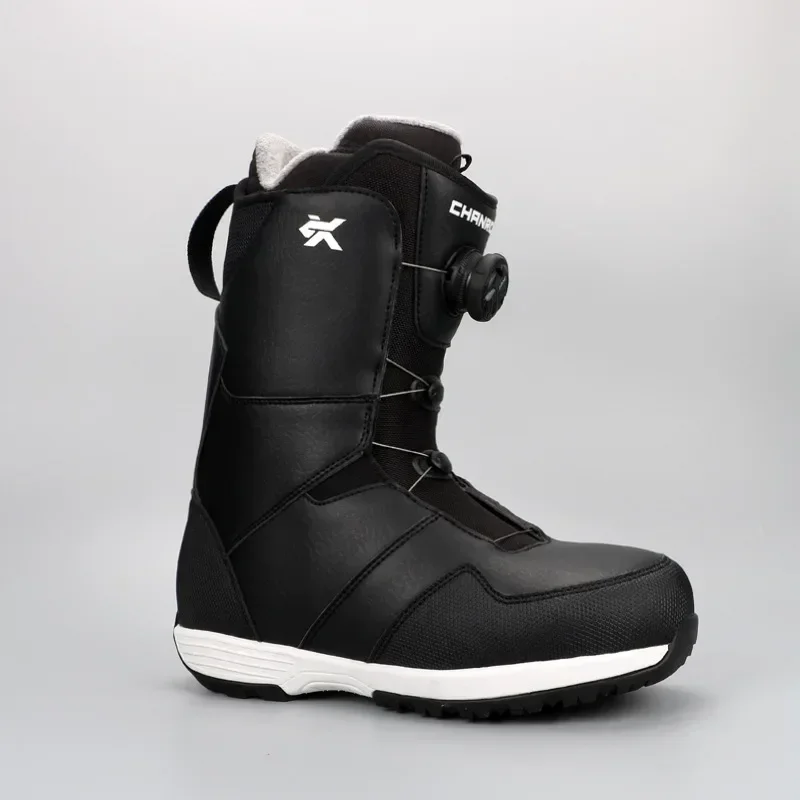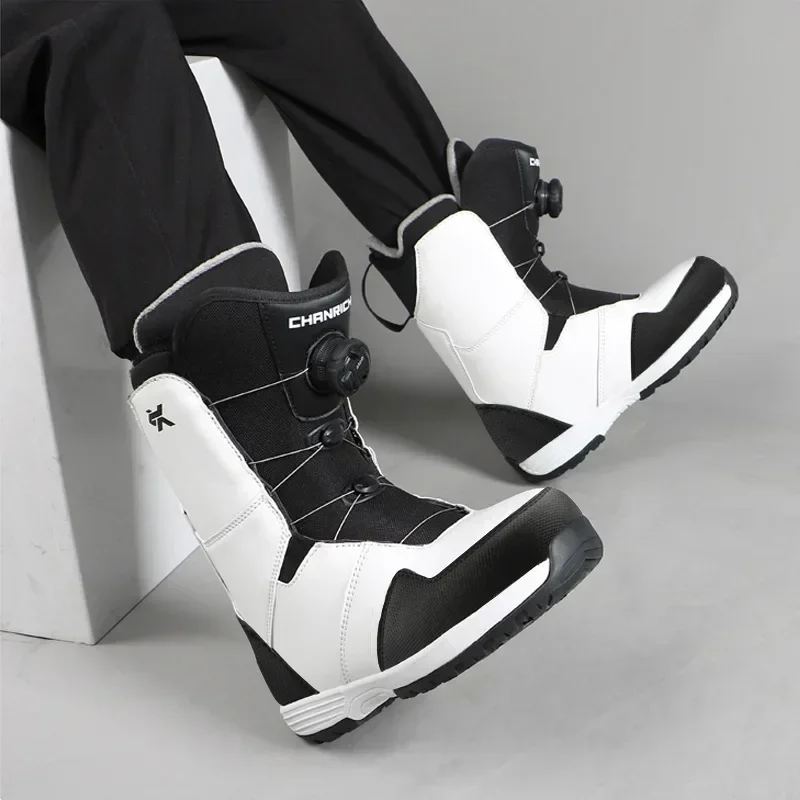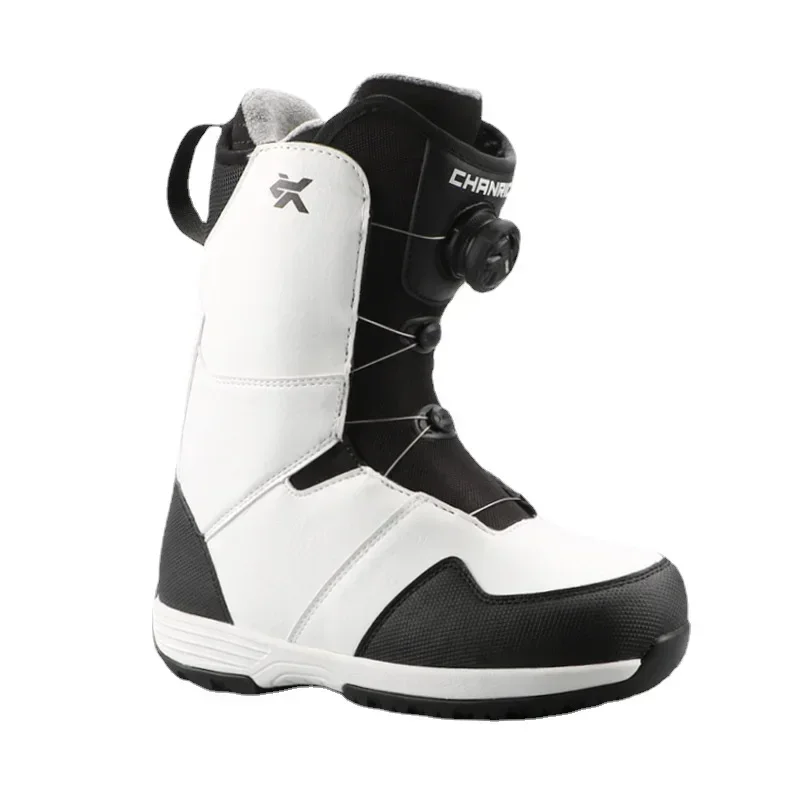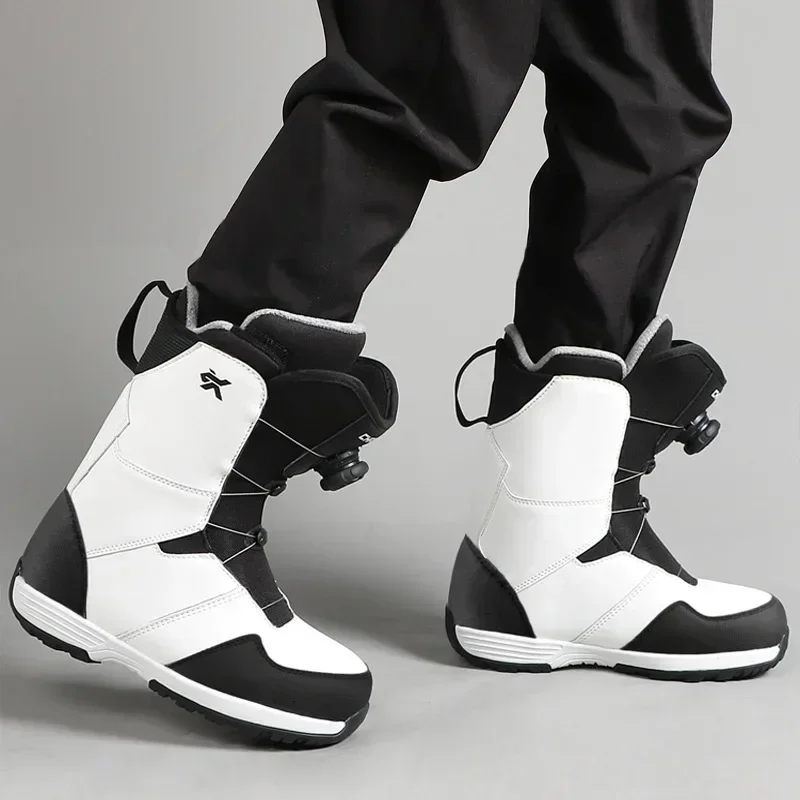Importance of Proper Fit in Snowboard Boots
Ensuring the proper fit in men’s snowboard boots is crucial for peak performance. A good fit prevents discomfort and potential injuries on the slopes. It also provides better control over the snowboard, enhancing rider confidence and efficiency. When boots are too tight, they can hinder circulation, causing cold and numb feet. On the other hand, boots that are too loose can lead to blisters and a lack of control. Therefore, securing boots that match the contours of your feet is essential. Moreover, a proper fit in snowboard boots helps with heat retention, ensuring your feet stay warm. This is vital for both comfort and performance during long days in the cold. In summary, the right fit is not just a matter of comfort; it is a key contributor to safety, control, and overall snowboarding enjoyment.

Types of Men’s Snowboard Boots
Choosing the best men’s snowboard boots involves understanding the different types available. Each type offers unique features that cater to specific riding styles and preferences. Let’s explore the main types you can consider.
Soft Boots
Soft boots are the go-to choice for many riders due to their comfort and versatility. They are designed with flexibility in mind, offering a forgiving fit that makes them ideal for freestyle and all-mountain riding. The softer material allows for natural movement, making it easier to perform tricks and navigate various terrains. With soft boots, you will experience a comfortable, more relaxed ride, suitable for long days on the mountain.
Hard Boots
For those who prefer alpine snowboarding or carving with precision, hard boots are the perfect fit. They closely resemble ski boots and provide exceptional support and response. This rigid design translates to direct power transfer between rider and snowboard, enabling quick, sharp turns. Hard boots are less common but are highly favored by racers and those seeking maximum control at high speeds.
Hybrid Boots
Hybrid boots combine features of both soft and hard boots to offer versatility and performance. They often have a softer upper section for comfort and a stiffer lower portion for support. This design gives riders a balance between flexibility and stability, suitable for various snowboarding disciplines. Hybrid boots can be a great option if you enjoy both freestyling and carving on the slopes.
Key Features to Consider When Selecting Snowboard Boots
When it comes to choosing men’s snowboard boots, there are several key features to consider. These features will impact your comfort, performance, and overall satisfaction on the slopes. It’s essential to evaluate each aspect carefully to determine what best suits your needs.
Flex Rating
The flex rating of a snowboard boot refers to its stiffness and ability to bend. It’s a crucial element that affects your board control and comfort. Generally, softer flex boots offer more forgiveness and are great for beginners or freestyle riders. They allow for easier maneuvering and are more comfortable for long periods. On the other hand, a stiffer flex is ideal for experienced riders who need precision and control for high-speed carving or racing. Make sure to choose a boot with a flex that matches your riding style.
Lacing Systems
Snowboard boots come with different lacing systems, each impacting how tight you can secure your boots. Traditional laces offer a classic approach and allow for custom tightness. Quick-pull laces save time with an easy tightening mechanism. Meanwhile, Boa lacing systems use a dial to tighten and offer the convenience of adjustments on the go. Consider the type of lacing that provides both security and ease for you when boots are on.
Boot Liners and Cushioning
Comfort on the mountain is non-negotiable, making the boot liner and cushioning vital. Liners should mold to your feet and offer adequate support. Look for liners that have heat-moldable foam, as they can be customized to your foot shape. The boot’s cushioning is also important for absorbing impacts and vibrations when you’re riding rough terrain. High-quality cushioning can significantly improve your endurance and lessen fatigue. Ensuring that boots have the proper liners and cushioning will enhance your snowboarding experience.

How to Size and Fit Snowboard Boots Correctly
Sizing and fitting men’s snowboard boots demands attention to detail. To ensure a correct fit, follow these steps:
- Measure Your Feet: Start by measuring your feet length and width. Do this later in the day when feet tend to be largest.
- Know Your Mondopoint: Snowboard boots use the Mondopoint system, which is based on the metric length of your feet in centimeters.
- Consider Socks: Wear the socks you plan to snowboard in while trying on boots. Thick socks can affect the boot size you need.
- Check for Heel Lift: When trying on boots, your heel should stay in place when you bend your knees and lean forward.
- Toes Touching, Not Cramped: Your toes should lightly touch the boot’s end without feeling cramped when standing upright.
- Walk Around: Spend time walking in the boots. They should feel snug but not painful.
- Lacing System Matters: Lace the boots as you would when snowboarding to evaluate the fit accurately.
Remember, men’s snowboard boots might feel slightly tighter at first. They usually break in and conform to your feet after several uses. Always opt for boots that fit well from the start to avoid discomfort and potential injuries on the slopes. Properly sized boots enhance your control and overall snowboarding performance.
Breaking in Your Snowboard Boots: Tips and Tricks
After selecting the right men’s snowboard boots, breaking them in is your next step. This process ensures your boots mold to the shape of your feet, providing enhanced comfort and a better riding experience. Here are some tips and tricks to help you break in your snowboard boots effectively.
Start with the Right Fit
Even before you think about breaking them in, ensure that your boots fit correctly. Remember, boots that fit well initially will break in more comfortably. If your boots are too tight or too loose, no amount of breaking in will make them feel right.
Wear Them at Home
Start by wearing your boots around the house. Do this for a few hours over several days. This easy step helps the boots begin to conform to your foot shape without the pressure of the slopes.
Use Heat-Molding
Many men’s snowboard boots come with heat-moldable liners. Take advantage of this feature if available. Professional shops can heat and mold them to your feet, expediting the break-in process.
Gradual Introduction
For your first few rides, avoid long, intense sessions. Start with shorter sessions and progressively extend your time as the boots adjust to your feet.
Stay Active
While wearing the boots, flex your feet, ankles, and knees. Activity helps the material to warm up and adapt to your movements faster.
Be Patient
Breaking in boots takes time. Be patient and allow your boots to conform at their own pace. Rushing the process can lead to discomfort and a poor fit.
By following these tips and tricks, your men’s snowboard boots should be ready for the slopes in no time. Remember, well-fitted and well-broken-in boots are key to peak snowboarding performance.

The Role of Boot-Binding Compatibility
Choosing men’s snowboard boots that are compatible with your bindings is essential. This match-up influences your snowboard’s performance and safety. Different types of bindings are made to work with specific boots. This ensures the best response and control. When boots fit snugly into the bindings, you get precise turns and smooth rides. Here is what to consider for compatibility:
- Binding Type: Check if your bindings are strap-in, step-in, or hybrid. Each type matches certain boot styles.
- Boot Sole Profile: Make sure the boot sole fits the binding baseplate. This prevents unwanted movement.
- Flex Match: Your binding’s flex should complement your boot’s flex for optimal performance.
- Size: Boots and bindings come in sizes. Ensure they match to avoid sizing issues.
- Highback Alignment: The boot’s back should align with the binding’s highback for support.
Always test boot-binding setups before hitting the slopes. Properly matched gear offers better control and a more enjoyable snowboarding experience. Remember, safety comes first, so invest time in finding the right combination.
Top Recommendations for Men’s Snowboard Boots Brands
When selecting your men’s snowboard boots, brand quality can be as crucial as the type and features. Top brands are known for their commitment to performance, comfort, and durability. Here are some recommended brands that have earned a solid reputation amongst snowboarders:
Burton
Burton is synonymous with snowboarding and offers an extensive range of snowboard boots. Known for their innovation and quality, Burton boots are a favorite for riders of all levels. They provide various flex ratings and lacing systems to suit different styles and preferences.
DC
DC stands out with stylish designs and high-performance boots. Their models are designed with the latest technology to provide comfort and support. DC boots often feature advanced cushioning systems, making them suitable for demanding terrains.
K2
Offering a balance between functionality and affordability, K2’s snowboard boots are a popular choice. They produce boots with intuitive lacing systems and comfortable liners, appealing to both beginners and seasoned riders.
Salomon
Salomon is well-regarded for their durable and high-quality snowboard boots. Their boots come with innovative features, such as heat-moldable liners and reliable lacing systems, enhancing rider experience on the slopes.
ThirtyTwo
Focused on producing the best fit possible, ThirtyTwo has a strong following. They offer heat-moldable liners and boots with both traditional and progressive designs, appealing to freestyle and all-mountain snowboarders alike.
Choosing a reputable brand ensures your men’s snowboard boots will withstand the rigors of snowboarding while providing the necessary support and comfort. Always match the brand’s offerings with your personal needs and preferences for an optimal snowboarding experience.
Maintenance and Care for Snowboard Boots
Proper maintenance and care can greatly extend the life of your men’s snowboard boots. Here’s how to keep them in top shape:
Routine Cleaning
After each use, clean off any dirt or snow. Use a soft brush or cloth for the exterior. Make sure they’re completely dry before storing them away.
Drying Them Out
Remove the liners and dry them separately. Avoid direct heat as it can warp the boots. Air drying is best. Consider using a boot dryer for quicker results.
Check for Damages
Regularly inspect your boots for any wear and tear. Look out for loose stitching or worn out soles and address these issues promptly.
Proper Storage
Store your snowboard boots in a cool, dry place. Keep them away from direct sunlight which can break down the materials over time.
Freshen Up
Use odor neutralizers to keep your boots smelling fresh. Avoid spraying harsh chemicals directly into the boots.
Taking care of your snowboard boots will ensure they stay comfortable and perform well season after season. Keep these tips in mind to get the most out of your investment.
